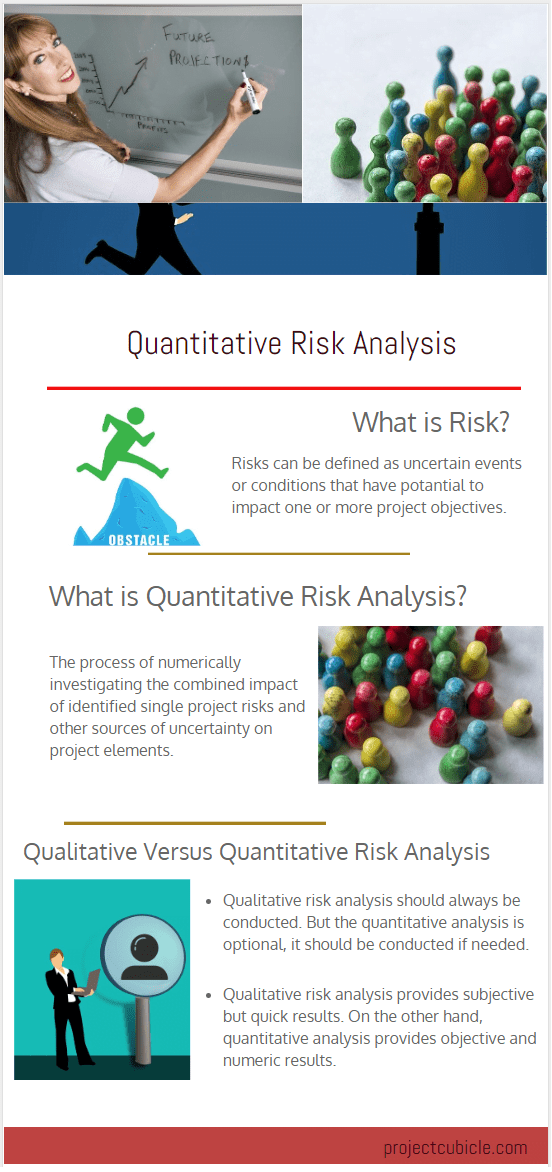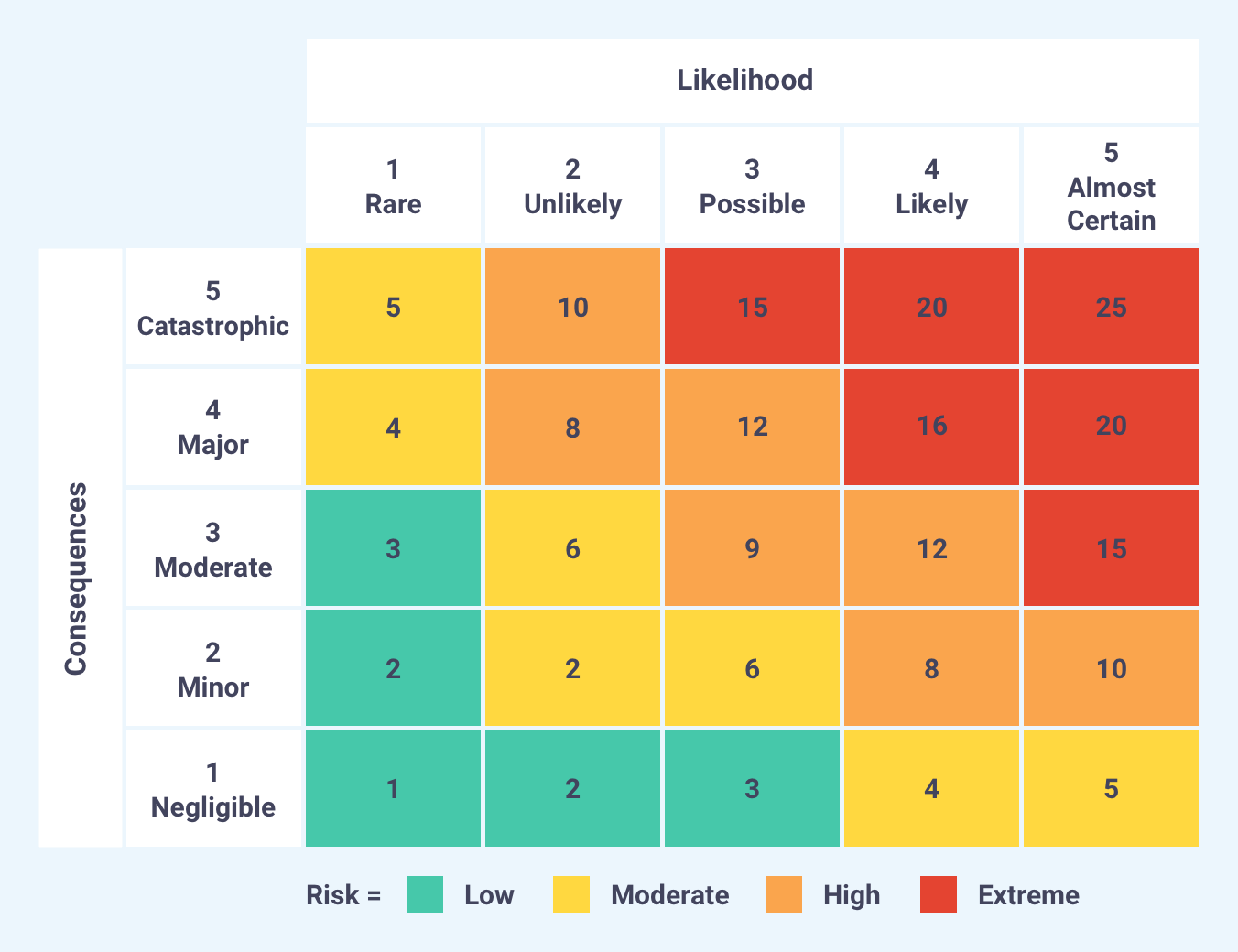If the probability was ranked as 4 and the impact was ranked as 3 we would multiply probability. Single loss expectancy SLE exposure factor EF annualized rate of occurrence ARO and annualized loss expectancy ALE are all key parts of figuring out the cost and benefit associated with risk.

Examples Of Quantitative Risk Calculations For Hazard Analysis Download Table
The results provide insight into the likelihood of project success and is used to develop contingency reserves.

. Risk analysis an important step in project risk management is performed through two main approaches. Risks are not prioritized by monetary value. While qualitative risk analysis should generally be performed on all risks for all projects quantitative risk analysis has a more limited use based on the type of project the project risks and the availability of data to use to.
Which best describes a quantitative risk analysis. This is important because while qualitative risk analysis. There are five inputs to perform this.
Quantitative risk analysis numerically assesses the overall effect of all identified project risks on project objectives. Which of the following best describes the disadvantages of quantitative risk analysis compared to qualitative risk analysis. Focuses on all the risks that have a possibility and high impact on the project elements.
Quantitative analysis is more time-consuming than qualitative. Which of the following best describes risk analysis. In laymans terms quantitative risk analysis assigns a numerical value to extant risks risk A has a 40 chance of occurring based on quantifiable data fluctuations in resource costs average activity completion time logistics etc and a 15 chance of causing a delay of X number of days.
Scales risks by using numbers 0-5 or percentages. An event that can cause harm to the asset B. Identify the two drawbacks to quantitative risk analysis compared to qualitative risk analysis.
Qualitative risk analysis is a quick way of determining the significance of your risks. A method that is based on gut feelings and opinions. Quantitative risk analysis requires complex calculations and Quantitative risk analysis is more time-consuming than qualitative risk analysis.
A method used to apply severity levels to potential loss probability of loss and risks C. It does this by assigned a projected value to the risks that have been ranked already by the previous process such as the Perform Qualitative Risk Analysis. Which of the following best describes quantitative risk analysis.
Does not use numerical methods. Qualitative Risk Analysis. Quantitative risk analysis entails complex calculations.
Quantitative Risk Assessment The quantitative RA describes the risk in numerical values indicating the intensity of risk associated with the process or application. A risk-analysis method that uses mathematical formulas and numbers to assist in ranking risk severity. A method that assigns monetary values to components in the risk assessment D.
Focuses on all the risks identified in the identify risk process. One of the most common ways to perform qualitative risk analysis is the Probability Impact Assessment. It assigns numerical values to risks based on quantifiable data such as costs logistics completion time staff sick days and so on.
Gantt charts still form the basis of most schedule applications used today but in terms of Quantitative Risk Analysis the available methods have evolved and diversified greatly providing us with a range of options specific to different risk types and their impacts. Unlike a qualitative risk analysis that only evaluate individual risks a quantitative risk analysis is able to determine asset value probability of loss and associated risks through measurable dataYou may also see product analysis examples. The __________ is the proportion of an assets value that is likely to be destroyed by a particular risk.
Quantitative Risk Analysis methods include amongst others Monte-Carlo Analysis Layers of Protection. The Quantitative Risk Analysis and Modelling Techniques are used to help identify which risks have the most influence on the project and organization. The quantitative RA method provides an enhanced understanding of risks and their associated factors such as severity and likelihood.
A scenario-based analysis to research different security threats B. When the threat to an asset can cause harm to the organization - typically resulting in a financial loss D. Explore the characteristics and purpose of qualitative and.
For example we might evaluate the risk probability and impact on a scale of 1 to 5. Understanding the difference between the two processes may be tested on the PMP CAPM and the PMI-RMP exams. Quantitative risk analysis is important for every business.
A weakness in the configuration of hardware or software C. Learning how to handle and countermeasure risk is important. Quantitative risk analysis is a numeric estimate of the overall effect of risk on the project objectives such as cost and schedule objectives.
A quantitative risk analysis is evidence-based. Qualitative risk analysis assigns high-level values for probability and impact while quantitative risk analysis assigns specific values to probability and impact which are used to calculate a. The specific values resulting from quantitative risk analysis enable risk responses or actions taken to address risks to be planned.
You will usually perform one after a qualitative risk analysis its a way to further assess the highest priority risks. In contrast with the qualitative risks analysis that allocates each risks.

Qualitative Risk Analysis Vs Quantitative Risk Analysis

Quantitative Risk Analysis Tools Definition Examples Projectcubicle

Qualitative Risk Analysis Quantitative Risk Analysis Safetyculture

What S The Difference Between Qualitative And Quantitative Risk Analysis
0 Comments